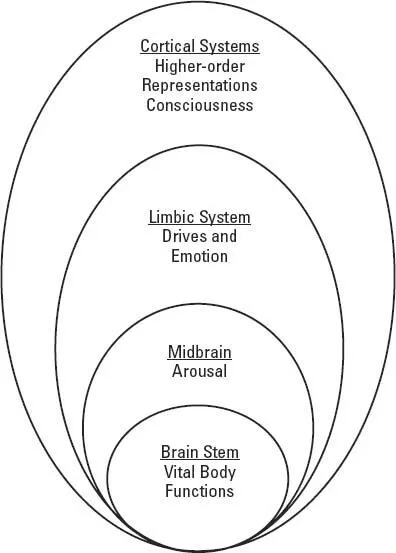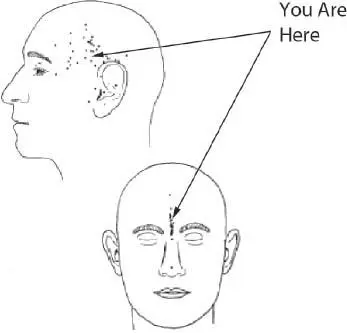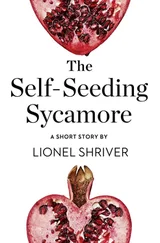Bruce Hood - The Self Illusion
Здесь есть возможность читать онлайн «Bruce Hood - The Self Illusion» весь текст электронной книги совершенно бесплатно (целиком полную версию без сокращений). В некоторых случаях можно слушать аудио, скачать через торрент в формате fb2 и присутствует краткое содержание. ISBN: , Издательство: Constable & Robinson, Жанр: Старинная литература, на английском языке. Описание произведения, (предисловие) а так же отзывы посетителей доступны на портале библиотеки ЛибКат.
- Название:The Self Illusion
- Автор:
- Издательство:Constable & Robinson
- Жанр:
- Год:неизвестен
- ISBN:9781780331379
- Рейтинг книги:5 / 5. Голосов: 1
-
Избранное:Добавить в избранное
- Отзывы:
-
Ваша оценка:
- 100
- 1
- 2
- 3
- 4
- 5
The Self Illusion: краткое содержание, описание и аннотация
Предлагаем к чтению аннотацию, описание, краткое содержание или предисловие (зависит от того, что написал сам автор книги «The Self Illusion»). Если вы не нашли необходимую информацию о книге — напишите в комментариях, мы постараемся отыскать её.
The Self Illusion — читать онлайн бесплатно полную книгу (весь текст) целиком
Ниже представлен текст книги, разбитый по страницам. Система сохранения места последней прочитанной страницы, позволяет с удобством читать онлайн бесплатно книгу «The Self Illusion», без необходимости каждый раз заново искать на чём Вы остановились. Поставьте закладку, и сможете в любой момент перейти на страницу, на которой закончили чтение.
Интервал:
Закладка:

Figure 3: Illustration of structural and functional hierarchy of brain systems
One of the most surprising discoveries in recent years is that the cortex is not where the majority of neurons are found. Most neurons are densely packed into a specialized region in the base at the back of the brain known as cerebellum, which controls movement. 10Only about a fifth of neurons are found in the remaining areas of the cortex that we usually associate with higher level thinking. This is surprising as one would assume that the complex mental processes involving thought would benefit from having more processors. However, the power is not in the number of neurons but the amount of connections. Like many performance issues in life, it’s not how much you have, but what you do with it and who you know. Even though the cortex has fewer neurons that one might expect, it has much greater connectivity with more extensive and longer fibres that join together different, widely distributed populations. This is the secret to the power of the human cortex – communication. By integrating information from diverse areas, the brain can generate rich, multidimensional experiences. Somehow, out of this richness comes our conscious self. Without cortical activity, you lose consciousness – you lose your self.
Not only does this multilayered model represent one of the major organizational layouts of the brain, but it also illustrates the relative developmental progression that has taken place in the brain through evolution, with the lower systems being more mature and operational than the upper systems which continue to develop into adulthood. Babies start out with functioning lower centres. With time and experience these lower regions become increasingly interconnected with the higher centres that exert influence and control so that the brain operates in a coordinated way.
You can see this coordination emerging throughout childhood. In fact, many scientists like myself believe that much of the change in early development can be attributed to not only the emergence of higher brain centres, but also the integration between these systems and their control over lower mechanisms. For example, something as simple as eye movement is controlled initially by lower brain systems below the cortex that are working from birth. 11The problem is that these lower systems are fairly dumb. Those that control eye movement have evolved simply to direct your gaze to the darkest and brightest objects in the world. So for very young infants, the brightest things usually get their attention, but the trouble is that they lack the control to look away easily. For example, below two months of age, they have ‘sticky fixation’ – when they get stuck on a particular visually compelling target. 12The trouble is that if the most visible thing always captures your gaze, then you are going to miss everything else in view. In fact, when I worked at a specialized unit for children with visual problems, we used to get young mothers coming in worried that their healthy babies were blind because they did not seem to move their eyes a lot. They seemed to be in some sort of trance, staring fixedly at the window. They wanted to know why their young baby didn’t look them straight in the eye.
The behaviour of these babies, like many of the limitations found in young infants, reflect the immaturity of their brains. During the early weeks babies have very little cortical control. Over time, cortical mechanisms start to exert increasing control over the lower mechanisms through a process called inhibition that works like a vetoing system to shut down activity. Inhibition helps to reign in the lower centres to allow more flexibility. In the case of sticky fixation, the cortical mechanisms enable the baby to look away from highly visible targets, such as the bright light streaming in through the window, and direct their gaze to less obvious things in the world.
It turns out that most human functions require some degree of inhibitory control. Here’s a cruel trick to play on an eight-month-old baby who has developed the ability to reach out for toys. Show them a desirable, colourful toy that they really want but put it in a large clear plastic container. At first they will bash their tiny little hands against the clear surface as they reach for it. Even though they will keep bashing their hands against the transparent plastic, they find it hard to stop reaching straight for the toy. 13The sight of the toy is so compelling that they cannot inhibit their reaches. In fact, inhibiting our impulsive thoughts and behaviours is one of the main changes over the course of a lifetime that contributes to the development of the self. When these regulatory systems fail, then the integrity of the self is compromised.
It is as if our brain is a complex machine made up of many subdivisions that compete for control of the body – like a complex factory under the control of a senior manager who oversees production. It is this senior manager in our head office that we all experience as the self. You may be able to find your own senior manager by a bit of introspection – the process of focusing in on your mental state. Try this out. Find a quiet spot and close your eyes. Turn your attention to your self. Try to locate where that self is. With both hands, point with your index fingers to the sides of your head where you think your inner self is currently located. When both fingers are pointing to where you think you are having experience at this very moment in time inside your head, keep one finger pointing and with the other hand point to this same place from the front of your head so you can accurately triangulate the site of your consciousness. Now draw the imaginary lines to find the intersection where ‘X’ marks the spot.
You have just located your own ‘point zero’ – where the ‘you’ inside your head sits. Figure 4 is taken from a study to map out where people think their point zero is located. 14It reveals that when we become mindful of our inner state, for most of us, it seems like we exist inside our heads, somewhere behind our eyes. We believe that this is the place where we are listening to a running commentary of thought, experiencing the sensations that the world throws at us and somehow controlling the levers that work the action and motions of our bodies.
Take a further moment to experience your body in this quiet state. If you concentrate you can feel its inner workings. As you read these lines, can you feel the subtle movements of your tongue bobbing up and down inside your mouth? Now that your attention has been drawn towards it, can you feel the pressure of the chair you are sitting on pressing against your backside? We can be in touch with our bodies but we are more than just our bodies. We control our bodies like some skilled operator of a complex meat machine.

Figure 4: Plot of locations where individuals typically feel their ‘self’ is located (based on study by Ferrari et al., 2008. Copyright permission given)
This internal self is sometimes called the ‘homunculus’ and this little chap is a real troublemaker. The homunculus is a problem because you are left none the wiser about the location of the self. In fact, considering the homunculus reveals why the reality of the self is a problem. There can be no single individual inside your head for the simple reason that, if true, then this homunculus would require an inner self as well. You would need a ‘mini-me’ inside the ‘you’ that is inside your head. But if the ‘mini-me’ inside your head is a homunculus, then who is inside the head of mini-me and so on, and so on? This would become an infinite regression leading to no end. Like an endless series of Russian matryoshka dolls, one inside another, the homunculus simply restates the initial problem of where the self is located in the mind. This is what the philosopher Dan Dennett has called the illusion of the Cartesian Theatre after the famous French philosopher, René Descartes, who thought that each of us possess a mind that inhabits our bodies. Dennett described this like sitting in the audience inside our heads watching the world of experience unfold like a play on a stage. But who is inside the head of the person watching the play in the Cartesian Theatre? Proposing an inner self simply does not help in solving the problem of where we are inside our heads.
Читать дальшеИнтервал:
Закладка:
Похожие книги на «The Self Illusion»
Представляем Вашему вниманию похожие книги на «The Self Illusion» списком для выбора. Мы отобрали схожую по названию и смыслу литературу в надежде предоставить читателям больше вариантов отыскать новые, интересные, ещё непрочитанные произведения.
Обсуждение, отзывы о книге «The Self Illusion» и просто собственные мнения читателей. Оставьте ваши комментарии, напишите, что Вы думаете о произведении, его смысле или главных героях. Укажите что конкретно понравилось, а что нет, и почему Вы так считаете.












